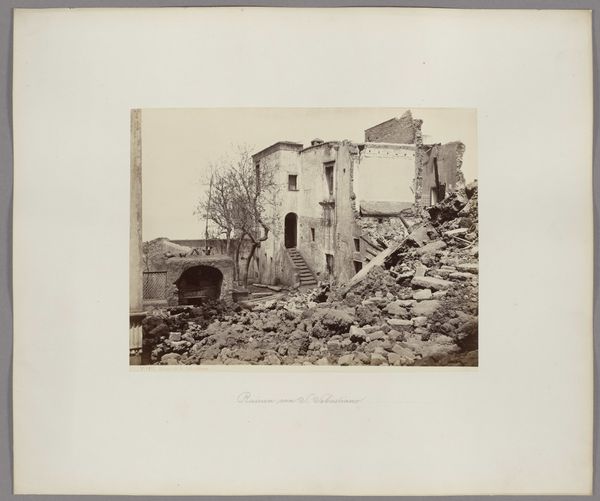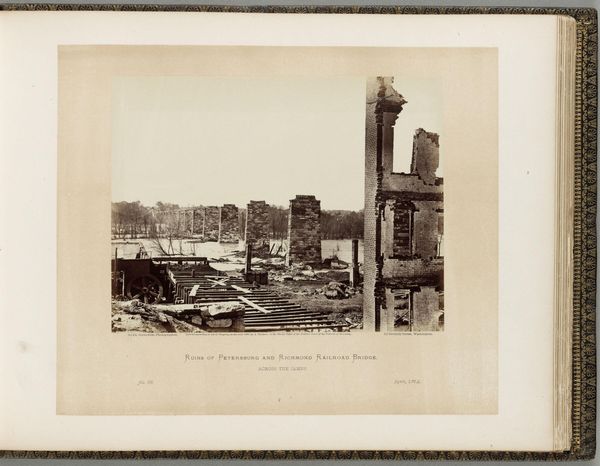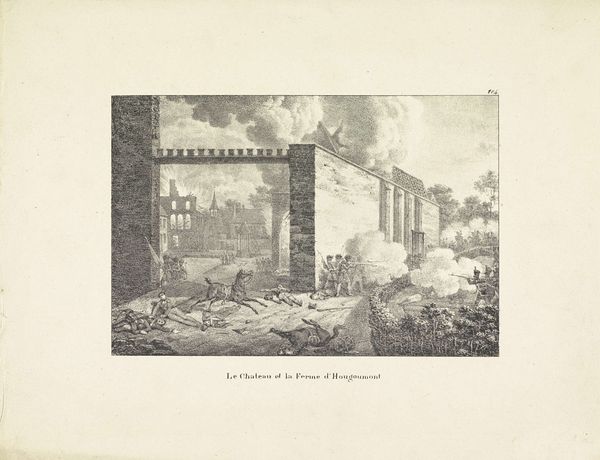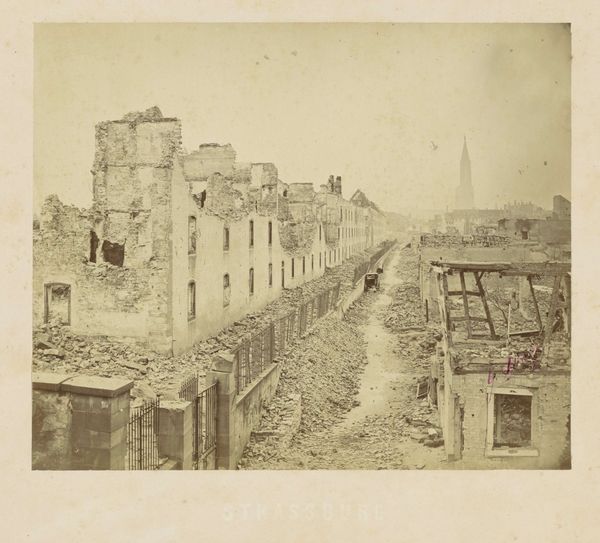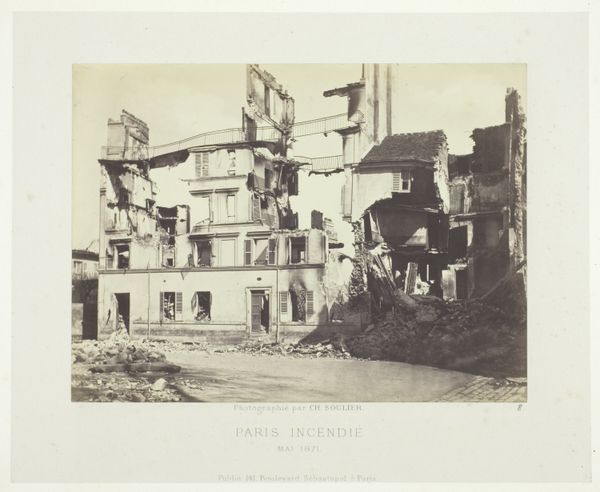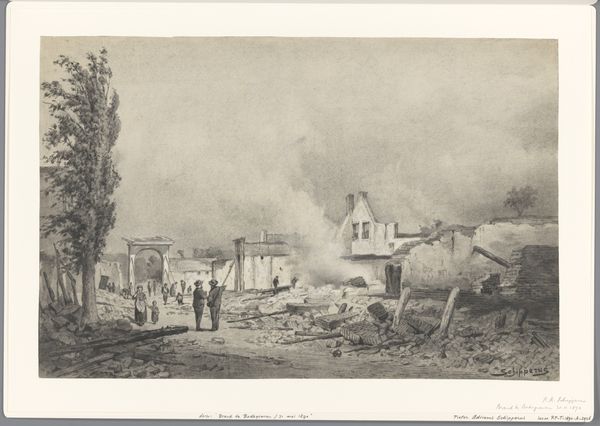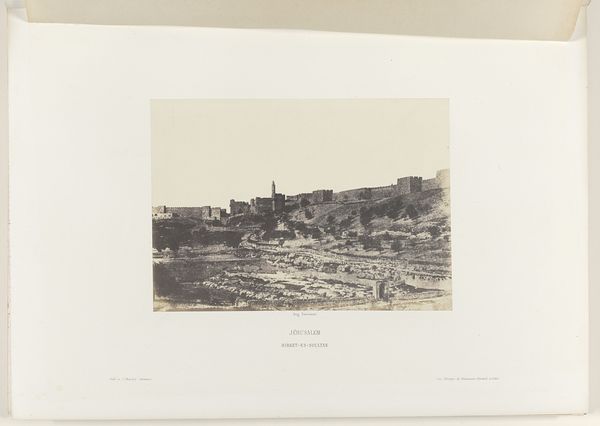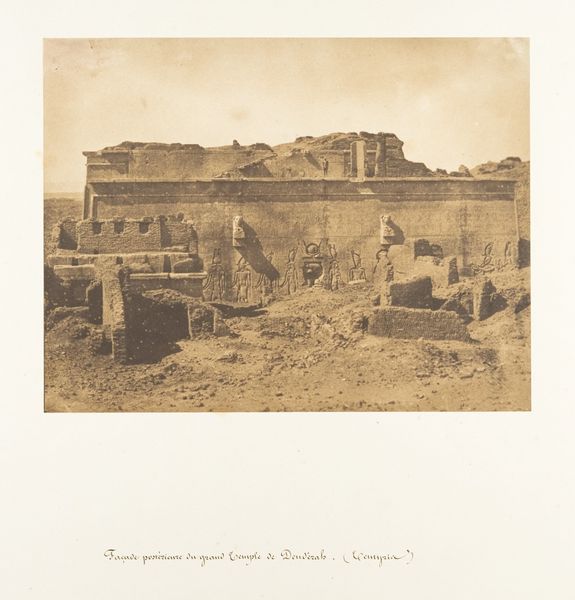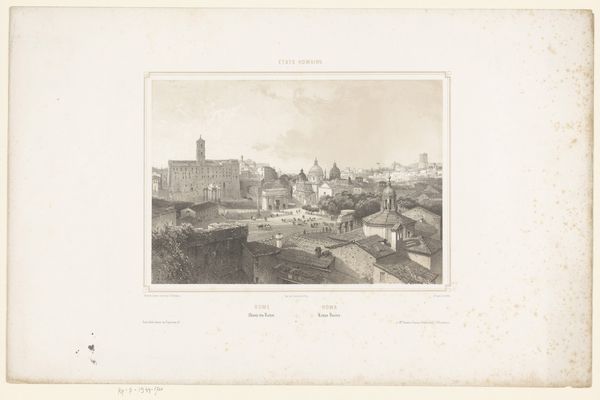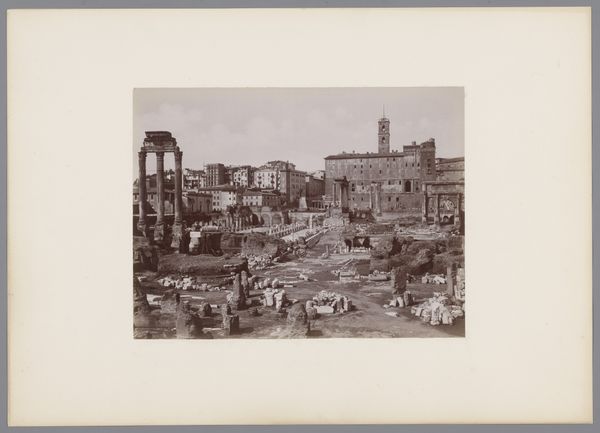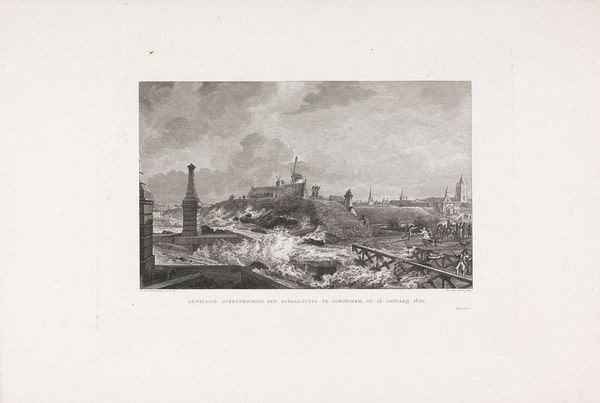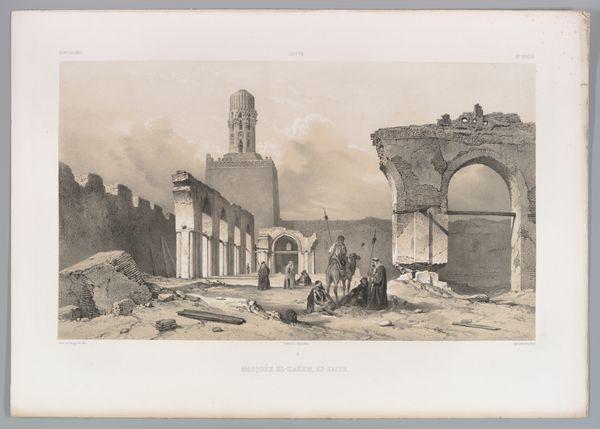
Dimensions: height 485 mm, width 611 mm
Copyright: Rijks Museum: Open Domain
This print was made by Carel Christiaan Antony Last, in the wake of the great fire of 1862 in Enschede. Last worked in lithography, a printmaking process that relies on the chemical repulsion of oil and water. The image is drawn on a flat stone or metal plate with a greasy medium, then treated with acid to fix the design. Ink adheres to the greasy areas but is repelled by the wet, blank areas. In this image, the stark materiality of the destroyed buildings is palpable, thanks to Last’s skilled use of the lithographic medium. Note the careful rendering of textures of brick and rubble, as well as the poignant depiction of survivors amidst the ruins. The chimneys in the background remind us that this was an industrial town, dependent on labor and production, and now utterly devastated. The print functions as both a historical record, and a reminder of the vulnerability of human endeavor in the face of disaster. It's a testament to the power of printmaking to capture both the physical and social realities of its time.
Comments
No comments
Be the first to comment and join the conversation on the ultimate creative platform.
